New Gear Alert: Grand Rhapsody Piano by Waves, Compact Monitors from Genelec, Free Plugin for Focusrite Users & More
Waves announces availability of the Grand Rhapsody Piano plugin.
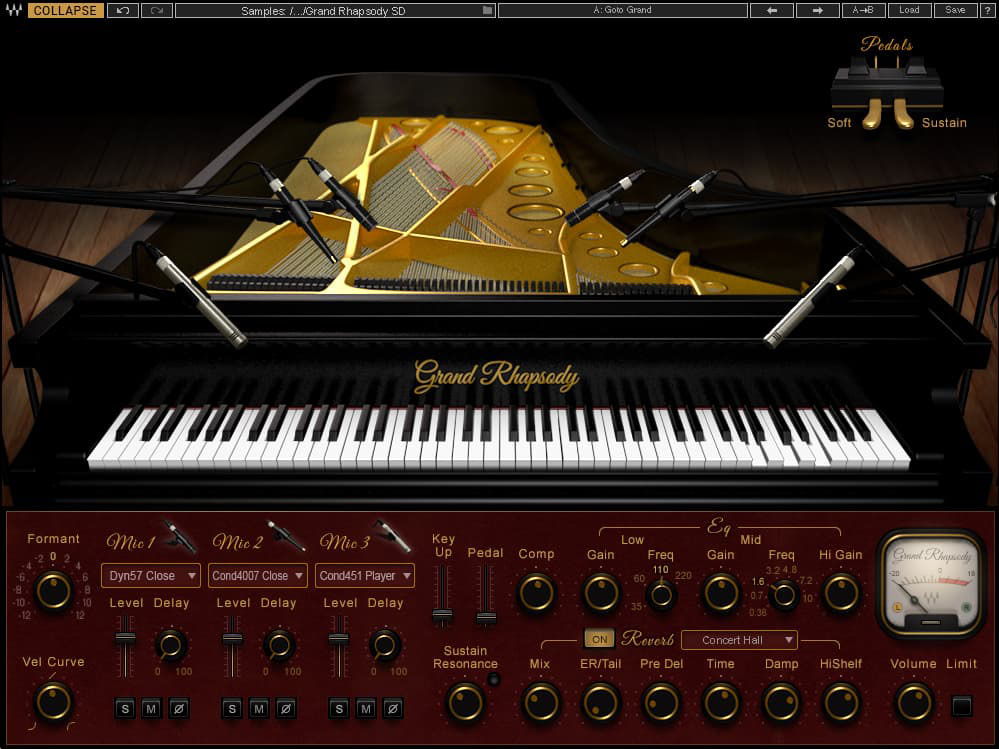
Waves’ Grand Rhapsody Piano was sampled from the actual Fazioli F228 used on the recording of Adele’s “Hello.”
Grand Rhapsody Piano is an addition to Waves’ expanding line of virtual instruments. It was sampled from the Fazioli F228 grand piano housed at London’s Metropolis Studios – the very piano played on GRAMMY®-winning hits such as Adele’s “Hello.”
The Fazioli F228 model was engineered from the finest Italian parts and craftsmanship. The deep bass, rich resonance and crystal clear tonal qualities produced by the wood have made the Fazioli a highly coveted instrument for the most discerning ears in music.
Recorded with eight different pairs of state-of-the-art microphones (B&K 4007, Shure SM57, Neumann U87, Royer R121, SE RN17, Coles 4038, Neumann KM84 and AKG C451) and using the highest-quality preamps and converters, Waves’ Grand Rhapsody virtual piano delivers the same majestic sound as the original piano, with added features that only a plugin can provide.
Grand Rhapsody Piano is available now for just $29.
Genelec announces “The Ones” Series of compact coaxial active monitors.
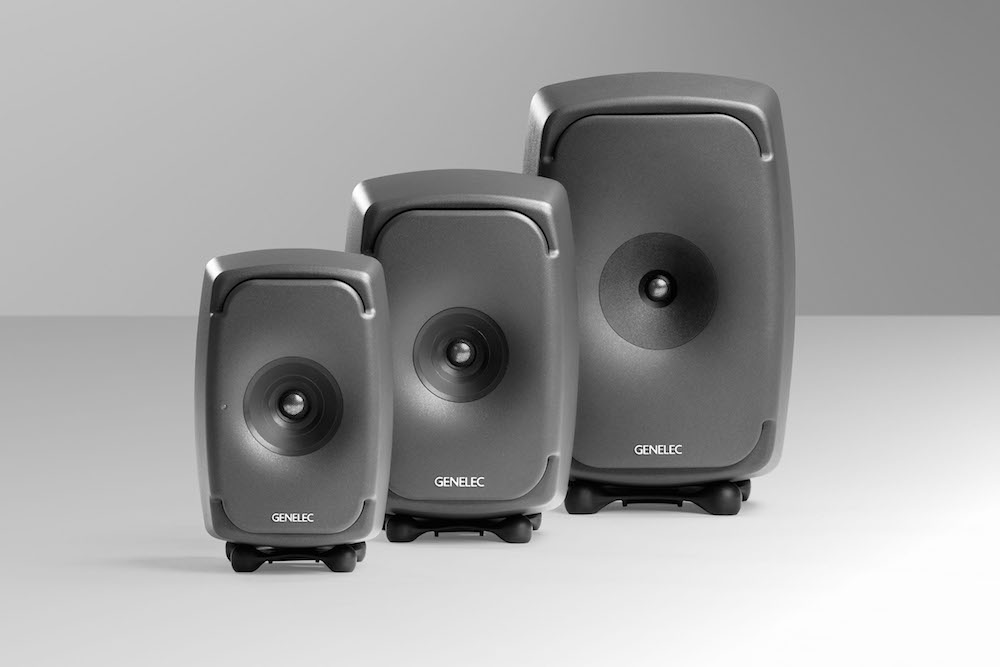
Genelec expands upon the popular 8351 monitor with the addition of the 8341 and 8331—the world’s smallest three-way coaxial monitors.
Genelec is proud to introduce Ultimate Point Source monitoring with “The Ones.” In this series, the award-winning 8351 three-way Smart Active Monitor™ is joined by the new 8341 and 8331—the world’s smallest three-way coaxial monitors—to create a complete compact coaxial range that redefines near-field monitoring.
The Ones deliver neutral reproduction, meaning users can make mix decisions with confidence while also listening for longer sessions. The dramatic reduction in unnatural imaging means listener fatigue is a fraction of that experienced with other systems. In addition, Genelec’s famous Directivity Control Waveguide (DCW) is combined with the precision of The Ones’ concealed dual woofer design, resulting in less colored reflections.
Like the 8351, both the 8341 and 8331 can be orientated horizontally or vertically using an adjustable IsoPod™ base for isolation, with no compromise in performance, offering maximum flexibility to fit even the tightest of working environments. But while the 8341 and 8331 both echo the 8351 in form and function, the new models have been entirely reengineered to meet the challenges of their ultra-compact dimensions (just 13.78” x 9.33” x 9.57” for the 8341, and 11.77” x 7.44” x 8.70” for the 8331).
The Ones are also powerful. The short-term maximum output capacities for each of the models is 110dB SPL for the 8341 (at 1m), and 104dB SPL for the 8331 (at 1m), with accuracy better than ±1.5dB, and respective frequency responses starting at 45Hz and 38Hz (-6dB) and extending beyond 40kHz both for the analog and digital inputs.
Audio-Technica is now offering a wide range of content creation microphone solutions.
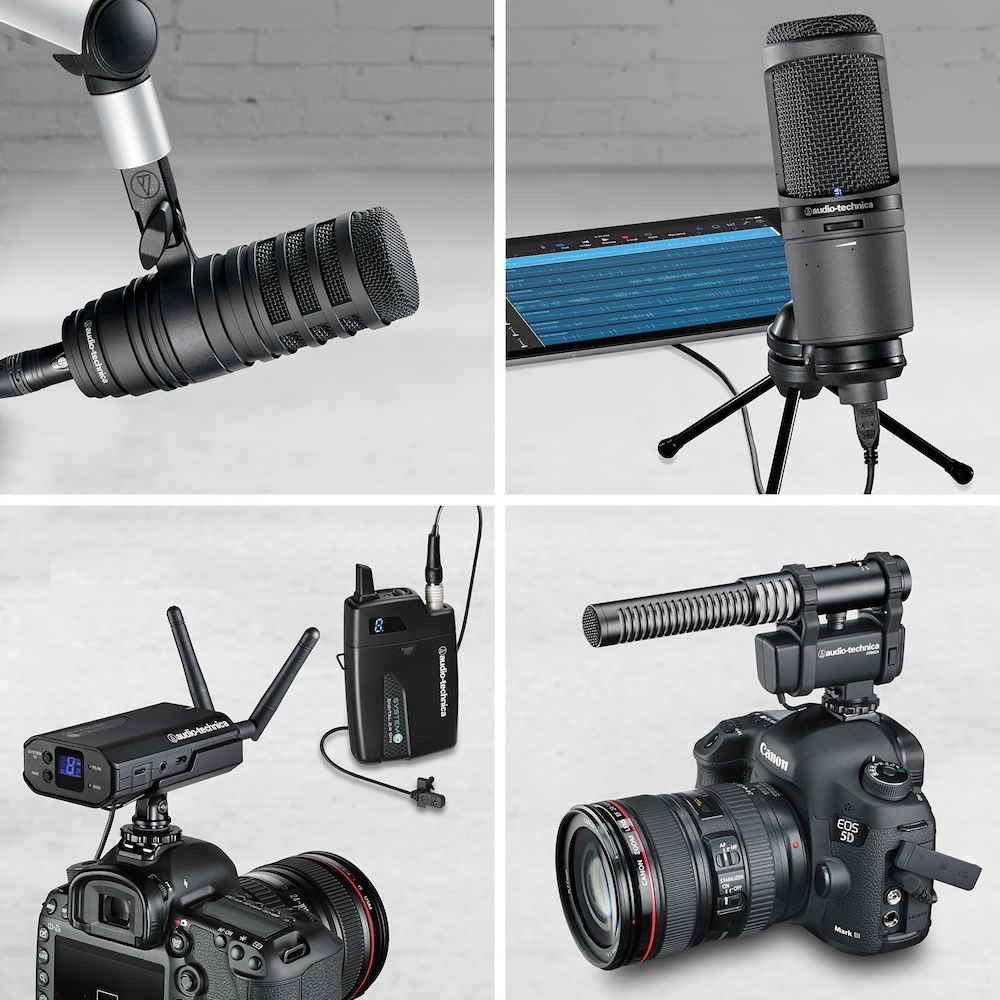
Whether you’re a podcaster, social media or YouTube personality, journalist, livestreamer, or anything of the like, Audio-Technica has you covered with their wide range of content creation microphones.
With this new line, Audio-Technica is now catering to podcasters, social media and YouTube personalities, journalists and interviewers, livestreamers, voiceover artists, musicians and more—including such models as A-T’s acclaimed AT8024 Stereo/Mono Camera-Mount Microphone, AT2020USB+ Cardioid Condenser USB Microphone, AT2020USBi Cardioid Condenser USB Microphone, System 10 Camera-Mount Portable Digital Wireless System, BP40 Large-Diaphragm Dynamic Broadcast Microphone, and AT2005USB Cardioid Dynamic USB/XLR Microphone.
The lightweight, feature-rich AT8024 is suited for video production, in-field interviews, product demos, and wherever else capturing high-quality audio for video is the task at hand. Selectable cardioid mono and internally matrixed Mid-Side stereo modes provide the flexibility to focus the recording on a single sound source or to widen the field for outstanding sonic realism, while selectable filters and pads extend its flexibility.
The AT2020USBi is suited for tasks including podcasting, remote streaming into IOS devices and voiceover use. Modeled after the critically acclaimed AT2020, this digital output mic features an A/D converter with up to 24-bit/96kHz sampling—both use USB and Lightning connector cables and an integrated gain control.
From the same family, the AT2020USB+ is suited for podcasting, home studio recording, streaming and voiceover use. Equipped with a USB output, the AT2020USB+ adds a built-in headphone jack with volume control that allows direct, delay-free monitoring, with a mix control that blends microphone and pre-recorded audio. The cardioid mic supports 16-bit, 44.1/48kHz sampling rates.
The System 10 Camera-Mount Wireless is suited for video production, electronic news gathering (ENG) and every mobile application in between. The receiver features multiple mounting options to accommodate a variety of cameras and recording devices. System 10 digital wireless mics provide multi-layer diversity performance assurance, with instantaneous channel selection, sync and setup in the license-free, TV-interference-free 2.4 GHz band. The system is available in bodypack and handheld configurations with an audio resolution of 24-bit/48kHz.
The BP40 large-diaphragm dynamic microphone is suited for podcasting, streaming and broadcast. The advanced-design mic includes a multi-stage internal windscreen, and offers rich, natural condenser-like sound. The optimized capsule placement keeps the audio focused on the broadcaster to maintain a commanding vocal presence free from electromagnetic interference (EMI) and popping.
The final highlight is the AT2005USB, suited for voice-over-IP, podcasting and—as it features both a USB output and an XLR analog output—it can be used from stage to studio to field recording and VoIP applications. The cardioid AT2005USB also includes a headphone output with level control for monitoring.
The AT8024 is available for $249; the AT2020USBi for $199; the AT2020USB+ for $149; the System 10 Camera-Mount Wireless for $379.95 to $449.95; the The BP40 for $349; and the AT2005USB for $79.
Focusrite gives customers another free Positive Grid plugin: BIAS Amp LE.
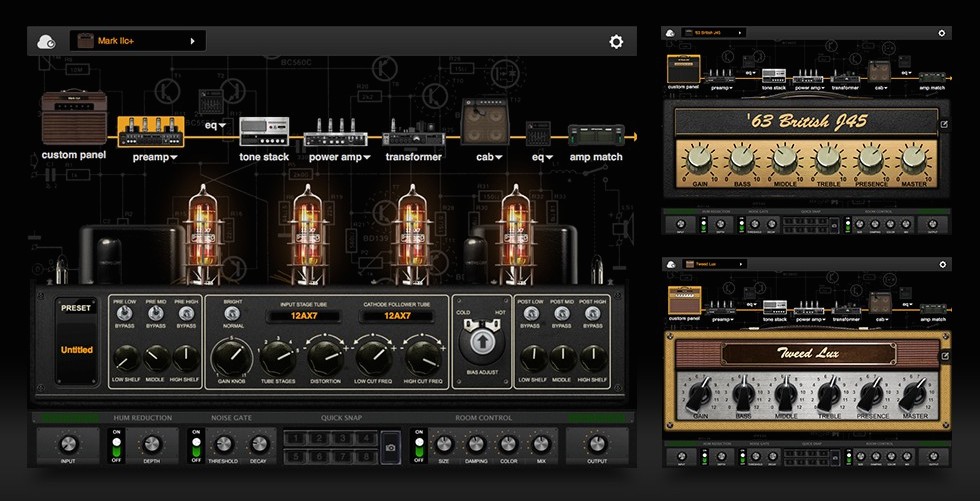
Focusrite returns with another Positive Grid offering for their Plug-In Collective, this time with BIAS Amp LE—an advanced guitar amp modeling plugin featuring the ability to customize the tubes, preamp, transformer, tone stacks, cabinet and microphone.
After the success of last November’s Plug-In Collective featuring the BIAS FX LE effects processor, Focusrite is back with a second Positive Grid offer. This time, BIAS Amp LE will give a taste of the full-blown BIAS Amp Professional amp modeler—one of the most popular guitar amp plugins in the industry. Those who have registered Focusrite hardware before May 31st, 2017 receive a free download of BIAS Amp LE by signing into their Focusrite accounts.
BIAS Amp is one of the world’s most accurate, thorough and versatile guitar amp modelers and designers. Its advanced amp modeling engine captures the warmth and feel of real tube amps in every aspect, component by component. BIAS Amp is fully customizable—the tubes, preamp, transformer, tone stacks, cab and mic can be swapped out to create custom amps and unique signature sounds. And thousands of custom amp models can be shared and downloaded on the cloud via ToneCloud, Positive Grid’s cloud-based tone community.
Find out more about the Plug-In Collective here.
UK-based Kenton releases MERGE-8, an intelligent MIDI merge unit.
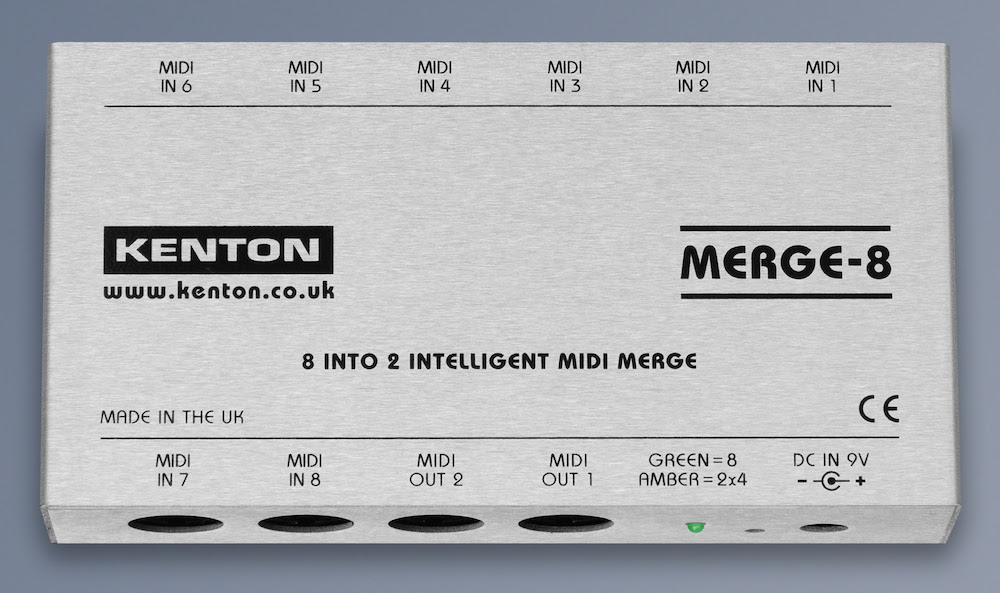
With MERGE-8, Kenton offers users the ability to fold eight MIDI inputs into two single (identical) outputs, or alternatively two independent four-to-one merges.
MERGE-8 can work in two modes: first is a full eight-into-two merge, where all MIDI data received across the eight input ports is merged into two outputs (with both ports outputting the same data); second is a split mode, with two completely independent four-into-one merges. The mode is selectable via a recessed push button and indicated with a bicolor LED. MERGE-8 stores this setting in EEPROM and starts up in whichever state it was last in.
Featuring a 32-bit ARM microcontroller for super-fast MIDI processing, MERGE-8 can handle large amounts of data. It is housed in a robust brushed aluminium case and is able to withstand the knocks of a life on the road as part of a large keyboard rig, yet it is just as at home in the studio. MERGE-8 is powered from an included region-appropriate AC adapter.
MERGE-8 is available for €135.
Please note: When you buy products through links on this page, we may earn an affiliate commission.






